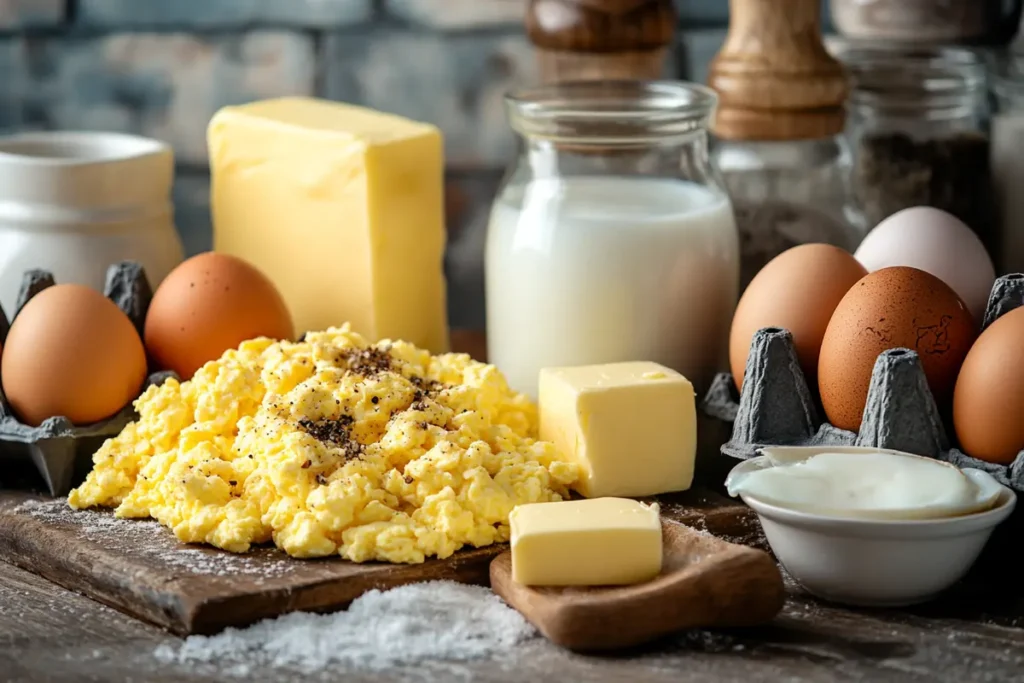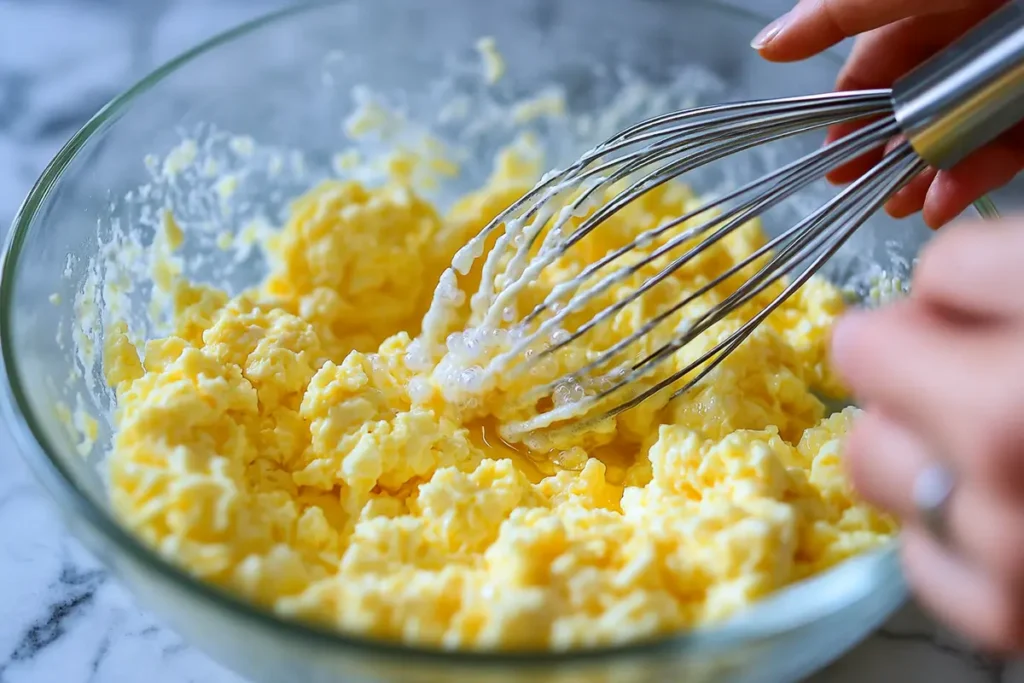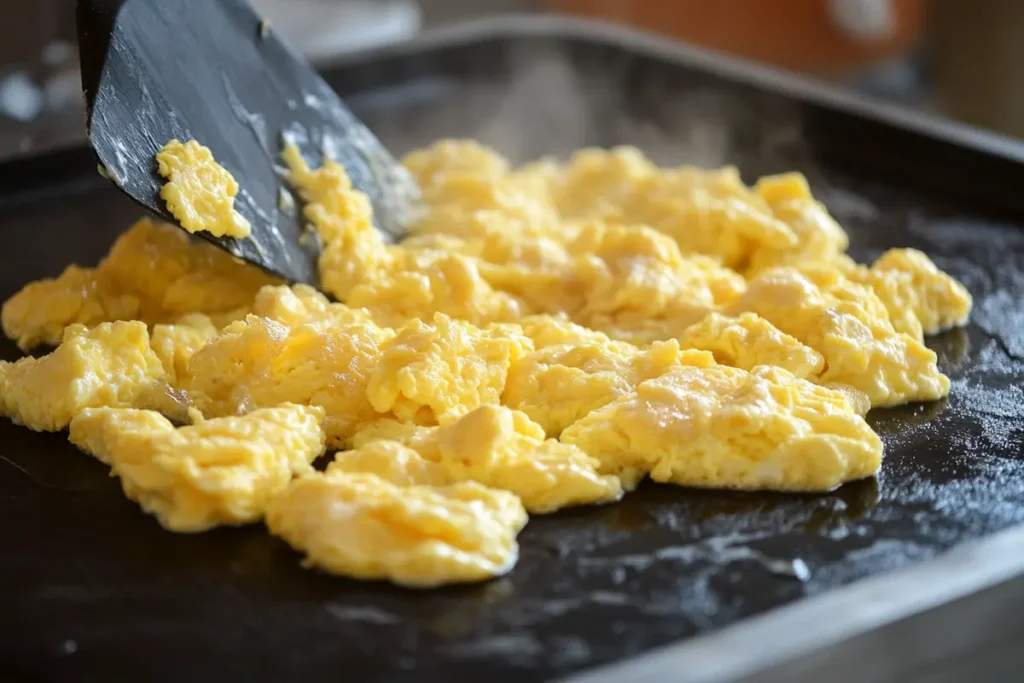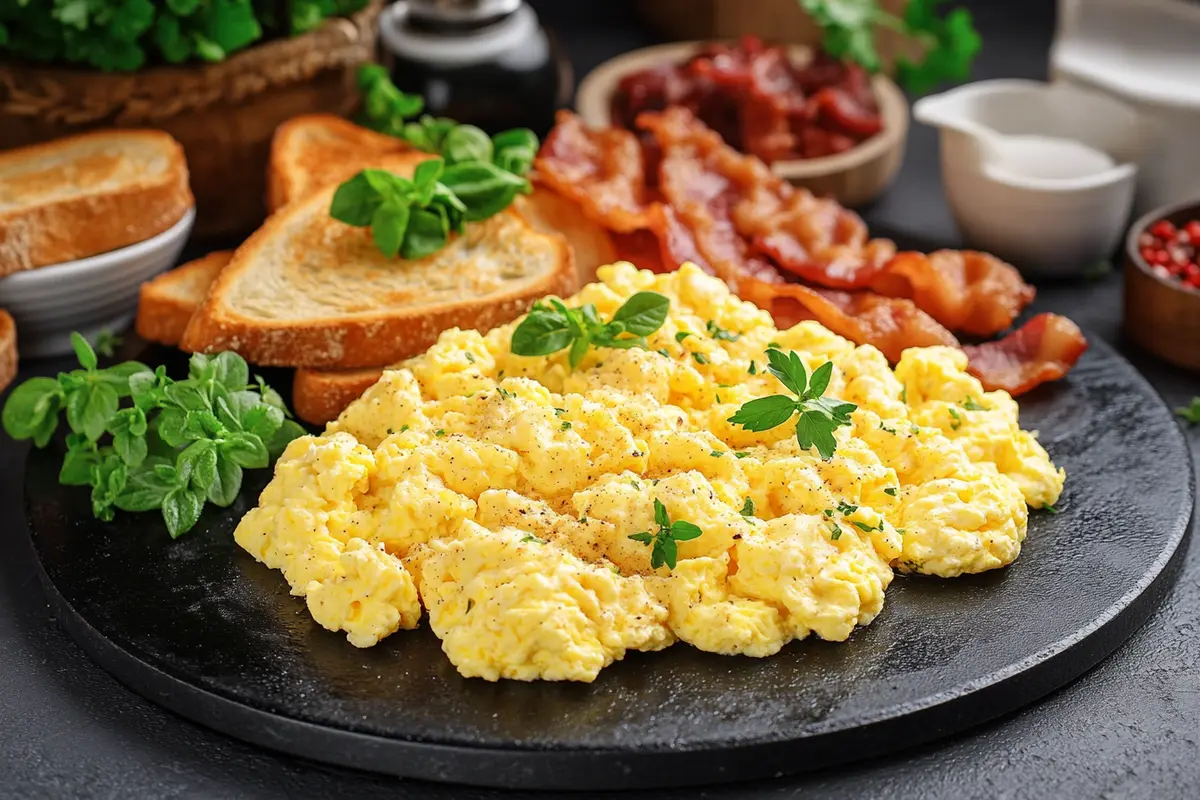Scrambled eggs are a breakfast staple, loved for their versatility and comforting texture. But have you ever wondered how to take them to the next level? Using a Blackstone griddle can transform ordinary scrambled eggs into a fluffy masterpiece. With its flat, even cooking surface and ability to retain heat, the griddle is perfect for achieving that cloud-like texture. In this guide, you’ll discover all the secrets, from preparation and technique to serving suggestions and griddle maintenance, ensuring a flawless breakfast experience every time.
Introduction
Understanding the Appeal of Fluffy Scrambled Eggs
Fluffy scrambled eggs are more than just food—they’re a breakfast luxury. Their light, airy texture, coupled with a rich, velvety flavor, makes them an absolute favorite. But achieving this perfection requires more than just cracking a few eggs into a pan. The right tools, ingredients, and techniques all play a part.
The Blackstone griddle elevates scrambled eggs to a whole new level. Unlike traditional stovetop methods, the griddle provides even heat distribution, preventing those dreaded burnt patches or undercooked spots. It’s a tool designed for precision and consistency, making it a go-to for anyone serious about cooking.
Why Use a Blackstone Griddle for Scrambled Eggs
You might be asking, “Why should I use a Blackstone griddle instead of my trusty pan?” Well, the griddle’s wide surface area allows for even spreading and cooking of the eggs, ensuring they don’t clump together or overcook in spots. The result? Perfectly uniform scrambled eggs with a delightful fluffiness.
Additionally, the Blackstone griddle’s versatility means you can prepare an entire breakfast on it—eggs, toast, and even grilled vegetables! Plus, its ease of cleaning and maintenance makes it a practical addition to any kitchen or outdoor setup.
Preparing for the Perfect Scramble
The foundation of great scrambled eggs starts long before the first crack of an egg. From selecting the freshest ingredients to ensuring your Blackstone griddle is primed and ready, preparation sets the tone for success. Each step matters, so let’s explore how to get everything in order.
Selecting Fresh and Quality Eggs
The journey to perfectly fluffy scrambled eggs begins with high-quality, fresh eggs. Look for eggs with firm whites and vibrant yolks, as they create the best texture. Organic or free-range eggs are often richer in flavor and more nutritious.

A pro tip: To test an egg’s freshness, place it in a bowl of water. Fresh eggs sink, while older ones float. Fresher eggs hold their structure better, ensuring a fluffier scramble on your griddle.
Essential Tools and Equipment
Making perfect scrambled eggs on a Blackstone griddle requires more than just eggs. You’ll need the right tools:
- Whisk or fork: For creating an airy egg mixture.
- Mixing bowl: Large enough to whisk eggs without spilling.
- Spatula: A silicone or heat-resistant spatula works best for folding and stirring.
- Griddle accessories: Keep oil dispensers, scrapers, and cleaning tools handy.
Investing in high-quality tools ensures a smoother process, better results, and less frustration. Plus, a sturdy spatula makes folding the eggs easier, creating that soft, cloud-like texture you’re aiming for.
Importance of Proper Griddle Seasoning
A well-seasoned Blackstone griddle is the unsung hero of perfect scrambled eggs. Seasoning not only prevents sticking but also enhances the flavor of your food. Before cooking, ensure your griddle’s surface is clean and coated with a thin layer of oil.
Here’s how to season your griddle:
- Heat the griddle until it’s hot.
- Add a small amount of oil (vegetable or avocado oil works well).
- Spread the oil evenly with a paper towel.
- Let the oil cook into the surface.
Repeat this process a few times when the griddle is new, and periodically thereafter. A well-seasoned surface gives your eggs a beautifully smooth texture and makes cleanup a breeze.
Setting the Ideal Griddle Temperature
Temperature control is crucial for making fluffy scrambled eggs. Too hot, and the eggs cook unevenly or scorch. Too low, and they might turn out rubbery.
Set your griddle to medium-low heat—around 275°F to 300°F. This range ensures slow, even cooking, allowing the eggs to set gently and retain moisture.
To check the temperature, sprinkle a few drops of water on the griddle. If the water sizzles and evaporates slowly, you’re in the sweet spot. Alternatively, use an infrared thermometer for precision. With the right temperature, your eggs will be irresistibly soft and fluffy.
Crafting the Egg Mixture
Now that your Blackstone griddle is ready, it’s time to prepare the star of the show: the egg mixture. The secret to fluffy scrambled eggs lies in how you treat your eggs before they hit the griddle.
Whisking Techniques for Incorporating Air
Whisking is more than just mixing eggs—it’s the key to creating light, airy scrambled eggs. Use a whisk or fork to beat the eggs vigorously for at least 30 seconds. The goal is to incorporate as much air as possible, resulting in a fluffier texture when cooked.
Keep an eye on the consistency: the mixture should appear uniform in color and slightly frothy. Whisk again just before pouring the eggs onto the griddle to ensure the air bubbles haven’t settled.

Adding Dairy: Milk, Cream, or Alternatives
Adding a splash of milk, cream, or non-dairy alternatives can elevate the richness of your scrambled eggs. The fat content in dairy enhances the eggs’ creaminess and helps prevent them from drying out.
- Milk: Adds moisture without making the eggs too rich.
- Heavy cream: For a luxurious, velvety texture.
- Non-dairy options: Oat milk or almond milk works for lactose-intolerant cooks.
Use about one tablespoon of liquid per two eggs. Too much liquid can make the eggs runny, so keep the ratio in balance.
Seasoning: Timing and Techniques
Seasoning is simple but essential. Add a pinch of salt and pepper to the mixture just before cooking. Salt helps break down the proteins in the eggs, leading to a creamier texture.
Avoid over-seasoning. Let the eggs’ natural flavors shine, and leave room for optional add-ins later.
Optional Add-ins for Enhanced Flavor
Once you’ve mastered the basics, you can personalize your scrambled eggs with flavorful additions. Popular choices include:
- Herbs: Chives, parsley, or dill for freshness.
- Cheese: Shredded cheddar, feta, or mozzarella for a creamy kick.
- Vegetables: Diced peppers, onions, or spinach for a healthy boost.
Fold these add-ins into the eggs just before they finish cooking to maintain their texture and flavor.
Cooking Process on the Blackstone Griddle
The cooking process is where the magic happens. With your Blackstone griddle prepped and your egg mixture ready, it’s time to transform simple ingredients into a fluffy, golden delight. Timing, technique, and temperature all come into play here.
Preheating the Griddle
Preheating is essential for even cooking. Set your griddle to medium-low heat and let it warm up for 5–10 minutes. A properly preheated griddle ensures the eggs cook consistently without sticking.
To test if the griddle is ready, sprinkle a few drops of water on the surface. If the water dances and evaporates gradually, you’re good to go. Avoid overheating, as high temperatures can cause the eggs to cook too quickly, sacrificing fluffiness.
Using Fats: Butter vs. Oil
Adding the right fat to your Blackstone griddle enhances flavor and prevents sticking. The choice between butter and oil depends on personal preference:
- Butter: Provides a rich, creamy flavor and helps create a golden crust. Use unsalted butter to avoid over-salting your eggs.
- Oil: Neutral-flavored oils like avocado or vegetable oil are great for a smooth texture. They’re also less likely to burn at higher temperatures.
For the best of both worlds, combine butter and oil. Start with a small pat of butter for flavor, then add a drizzle of oil for extra lubrication. Spread the fat evenly using a spatula or paper towel before pouring the eggs.
Pouring and Managing the Egg Mixture
Once your griddle is preheated and greased, it’s time to pour the egg mixture. Stir the eggs one last time to ensure air bubbles are evenly distributed, then pour them slowly onto the griddle.
Use a spatula to gently spread the mixture if it pools too much in one spot. Avoid overworking the eggs initially—let them set slightly before you start moving them. This helps maintain their structure and fluffiness.
Stirring and Folding Techniques
Stirring and folding are critical to achieving soft, fluffy scrambled eggs. Use a gentle, consistent motion with your spatula:
- Begin by pulling the edges of the eggs toward the center.
- As the eggs start to solidify, fold them over gently instead of stirring continuously.
This technique creates layers of tender eggs rather than a uniform mash. Work quickly but carefully—your goal is to preserve the airy structure created during whisking.

Recognizing Doneness and Avoiding Overcooking
Knowing when to remove the eggs from the griddle is just as important as how you cook them. Look for these signs:
- The eggs should be slightly shiny and moist but not runny.
- They’ll continue to cook slightly after being removed from the heat, so don’t wait until they’re completely dry.
Overcooked eggs lose their fluffiness and develop a rubbery texture. If in doubt, err on the side of slightly undercooked; you can always return them briefly to the griddle.
Serving Suggestions and Pairings
Once your fluffy scrambled eggs are perfectly cooked, the next step is presenting them with flair. Whether you’re going classic or creative, the right pairings can elevate your dish from simple to sensational.
Classic Breakfast Accompaniments
Nothing pairs with scrambled eggs quite like traditional breakfast sides. Some timeless options include:
- Toast or English Muffins: Lightly buttered and toasted, they add a delightful crunch to your plate.
- Breakfast Sausage or Turkey Links: For a protein-packed addition.
- Hash Browns or Roasted Potatoes: Their crispy exterior and soft interior complement the eggs perfectly.
For a balanced plate, include a mix of proteins, carbs, and fresh fruits to round out the meal.
Creative Serving Ideas
Want to think outside the breakfast box? Try these innovative ways to serve your scrambled eggs:
- Breakfast Tacos: Spoon the eggs into soft tortillas, add salsa, avocado slices, and shredded cheese.
- Veggie Bowls: Layer scrambled eggs over sautéed spinach, sweet potatoes, and mushrooms.
- Egg Sandwiches: Pile fluffy eggs onto a toasted bagel or croissant with a slice of cheese.
These ideas transform your scrambled eggs into an exciting centerpiece, perfect for brunch or a casual meal.
Beverage Pairings
Complement your scrambled eggs with refreshing beverages:
- Freshly Squeezed Orange Juice: Its bright acidity balances the richness of the eggs.
- Herbal Tea: Chamomile or mint tea offers a soothing contrast.
- Smoothies: Blend fruits like bananas, berries, and yogurt for a nutrient-packed side.
A thoughtful beverage pairing not only enhances flavors but also rounds out your breakfast experience beautifully.
Cleaning and Maintaining Your Blackstone Griddle
Keeping your Blackstone griddle in top condition ensures it performs perfectly for years to come. Regular cleaning and maintenance not only extend its lifespan but also preserve the flavors of your food.
Post-Cooking Cleanup Steps
Cleaning your griddle immediately after use is crucial to prevent food residues from sticking and building up. Here’s a simple post-cooking cleanup routine:
- Let the Griddle Cool Slightly: Avoid cleaning while the surface is extremely hot, but don’t wait until it’s cold.
- Scrape Off Residues: Use a griddle scraper to remove stuck-on food bits. Be gentle to avoid damaging the surface.
- Wipe with a Damp Cloth: Use a cloth or paper towel to wipe away grease and smaller particles. For tougher spots, a splash of hot water can help loosen them.
- Reapply Oil: Once the surface is clean and dry, apply a thin layer of cooking oil to prevent rust.
This quick process ensures your griddle is ready for its next use and keeps it looking pristine.
Regular Maintenance for Longevity
Routine maintenance helps your Blackstone griddle stay in excellent condition over time. Incorporate these practices into your care routine:
- Deep Cleaning: Occasionally, give your griddle a deeper clean by heating it up, applying water, and scrubbing with a non-abrasive scouring pad.
- Check the Seasoning: Over time, the seasoning layer can thin out. Re-season your griddle as needed by applying oil and heating the surface until it smokes.
- Protect from Moisture: Store your griddle in a dry area, and use a protective cover to shield it from dust and humidity.
With consistent care, your Blackstone griddle will remain a reliable kitchen companion for years of fluffy scrambled eggs and more!
Frequently Asked Questions (FAQs)
Can I cook scrambled eggs on a Blackstone griddle?
Absolutely! The Blackstone griddle is perfect for cooking scrambled eggs due to its even heat distribution and spacious surface. It’s ideal for achieving fluffy, soft eggs.
What temperature should my griddle be for scrambled eggs?
Set your griddle to medium-low heat, around 275°F to 300°F. This gentle temperature prevents overcooking and helps achieve a tender texture.
How do I prevent eggs from sticking to the griddle?
A well-seasoned griddle and the right amount of fat, such as butter or oil, ensure the eggs won’t stick. Spread the fat evenly before adding the eggs.
Is it necessary to add milk or cream to scrambled eggs?
Adding milk or cream isn’t mandatory but can enhance the eggs’ creaminess and flavor. Use about a tablespoon per two eggs for a rich, velvety texture.
How can I add extra flavor to my scrambled eggs?
Incorporate ingredients like fresh herbs, shredded cheese, or sautéed vegetables for added flavor. Experiment with spices like paprika or garlic powder for a unique twist.
What’s the best way to clean a Blackstone griddle after cooking eggs?
Scrape off residues, wipe with a damp cloth, and apply a thin layer of oil. This simple process ensures your griddle remains in great shape.
Conclusion
Recap of Key Techniques for Fluffy Scrambled Eggs
Mastering the art of fluffy scrambled eggs on a Blackstone griddle requires attention to every detail from selecting fresh eggs to maintaining the right temperature. With proper whisking, careful cooking techniques, and thoughtful seasoning, your scrambled eggs will be irresistibly soft and flavorful.
Encouragement to Experiment and Enjoy
Cooking on a Blackstone griddle opens up endless possibilities. Don’t be afraid to experiment with add-ins, pairings, and techniques to make the dish your own. Whether it’s breakfast for the family or a special brunch, these fluffy scrambled eggs are sure to impress!

